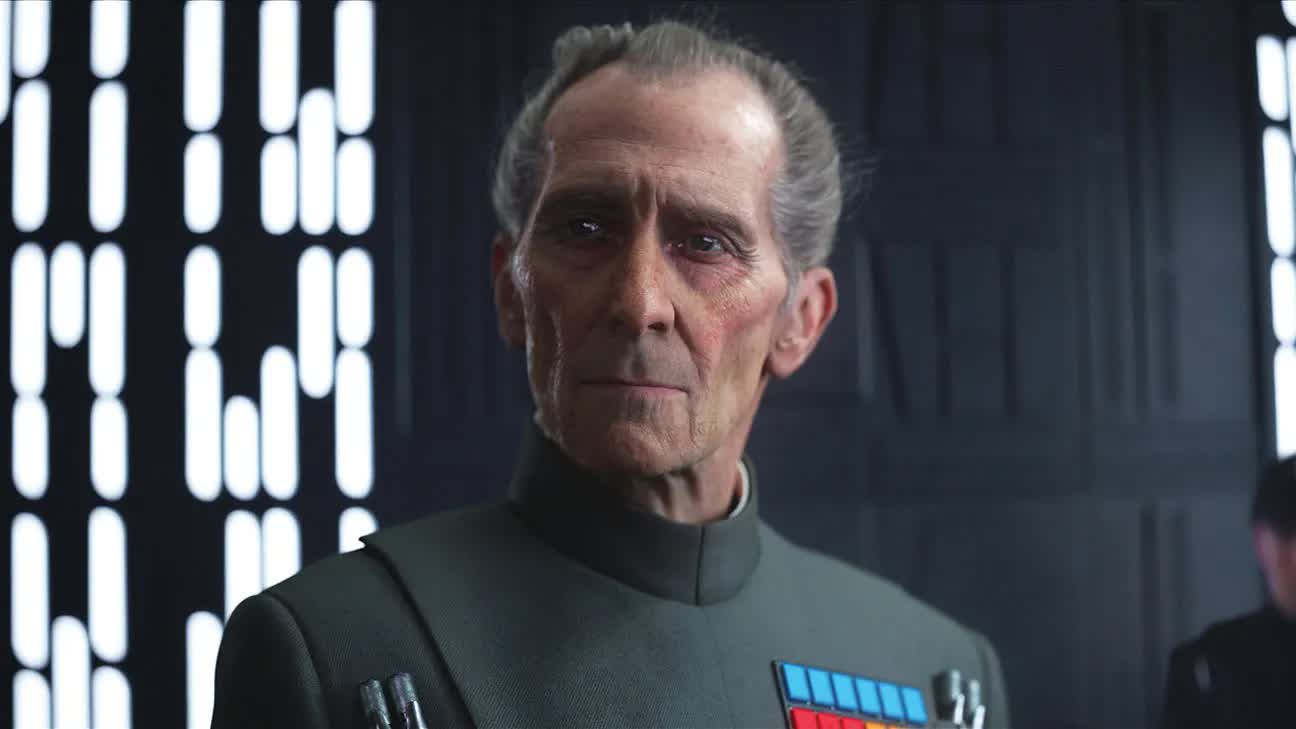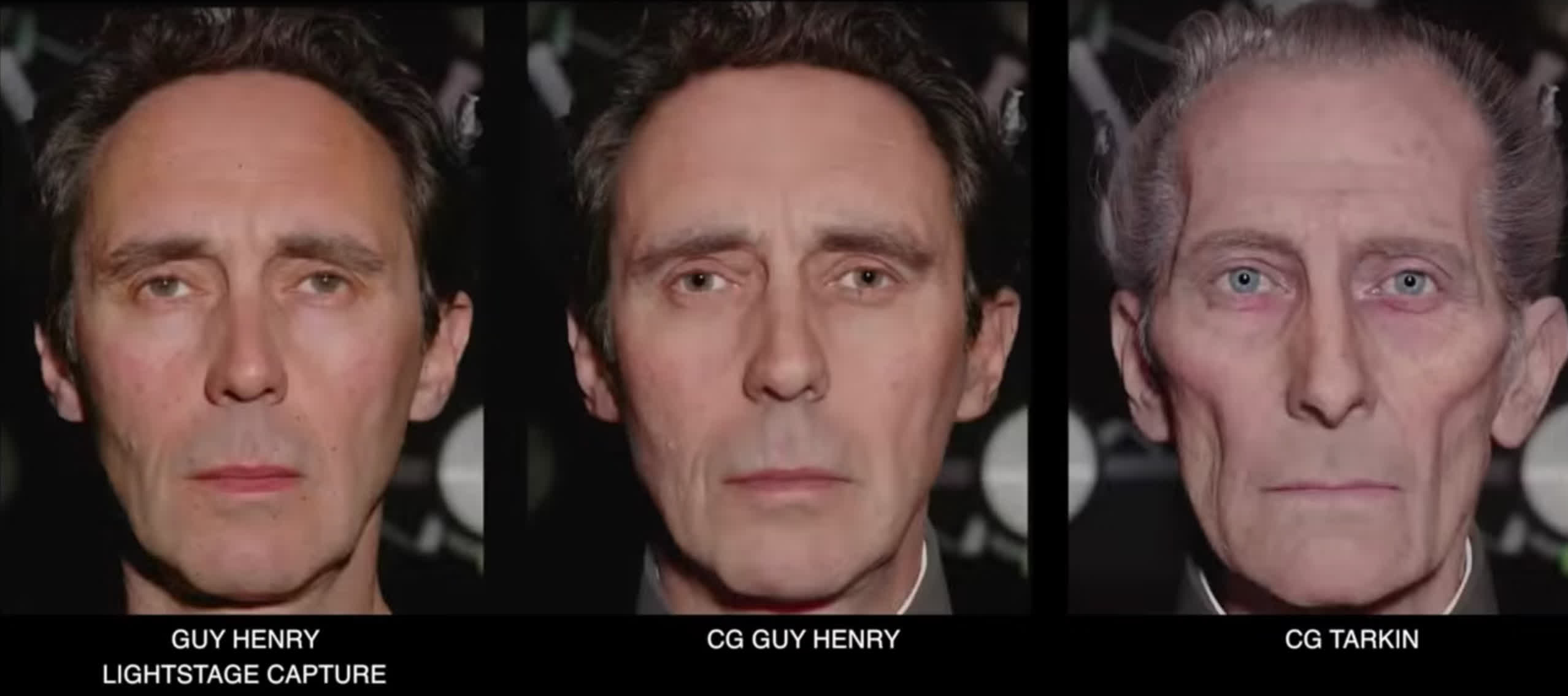In brief: The ability to recreate the likeness of dead celebrities was always going to be a contentious area. Unsurprisingly, a company is going to trial over the technology being used to add a deceased star to a movie. What is surprising is that the movie in question is Rogue One: A Star Wars Story, which was released back in 2016.

The excellent Rogue One famously used CGI to recreate Grand Moff Tarkin. Horror legend Peter Cushing, who played the character in 1977's Star Wars: Episode IV – A New Hope, died in 1994 aged 81.
Despite having been released almost a decade ago, Disney is now facing a legal battle over its inclusion of a digital Cushing in Rogue One.
The lawsuit, which was launched in 2019, is being brought by London-based film company Tyburn Film Productions, founded by Kevin Francis, one of Cushing's oldest friends. It is pursuing legal action against Disney-owned Lunak Heavy Industries – producer of Rogue One – as well as Lucasfilm, the since-deceased executors of Cushing's estate, and Associated International Management, the agency that represented the actor until his death.
Tyburn Film Productions claims it entered into an agreement with Cushing shortly before his death that prohibited the use of his likeness using special effects without consent.
Lucasfilm and Lunak Heavy Industries argued that they did not believe they needed permission to recreate Cushing's image based on his contract for A New Hope. The film companies also entered into an agreement with the executors of Cushing's estate to use his image for a fee of around $36,000.
Disney claimed that Francis was seeking "unjust enrichment" with his demand for damages of more than $650,000.
A UK court has rejected a December bid by Lucasfilm and Lunak Heavy Industries to have the claim dismissed. High Court judge Tom Mitcheson KC ruled that a trial should take place. The judge said that although he was "far from persuaded" that Tyburn Film Productions would succeed, the case was not "unarguable" and a "full factual inquiry" was needed.
Actor Guy Henry performed the role of Tarkin in Rogue One, with Cushing's face digitally added afterwards. Many fans say the final result has an uncanny valley effect.
The advancement of deepfake technology means that digital recreations are a lot more realistic these days – unauthorized AI recreations of actors were a big factor behind the SAG-AFTRA strike – so don't be surprised to see more lawsuits of this kind in the future.
Disney faces lawsuit over CGI recreation of Peter Cushing in Rogue One
